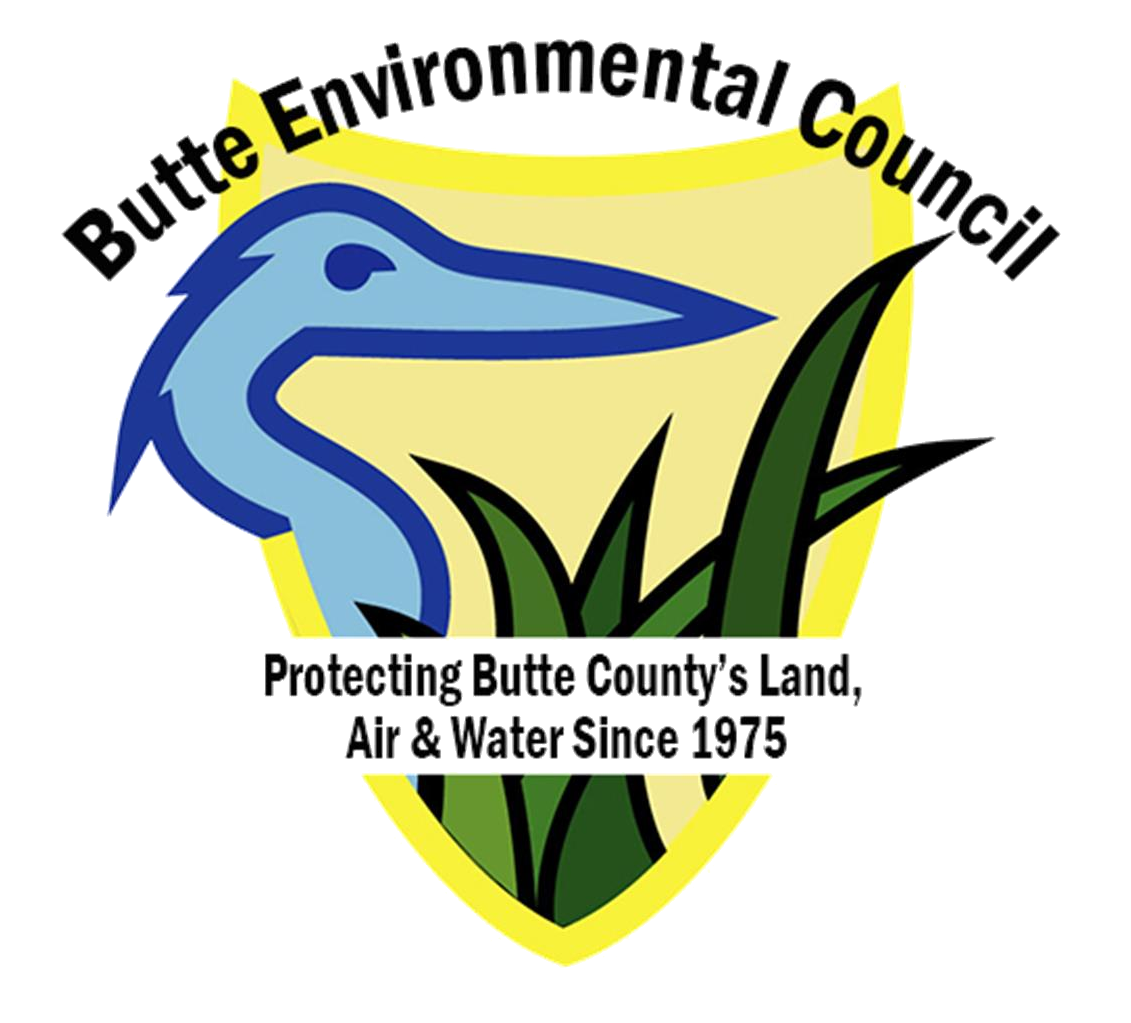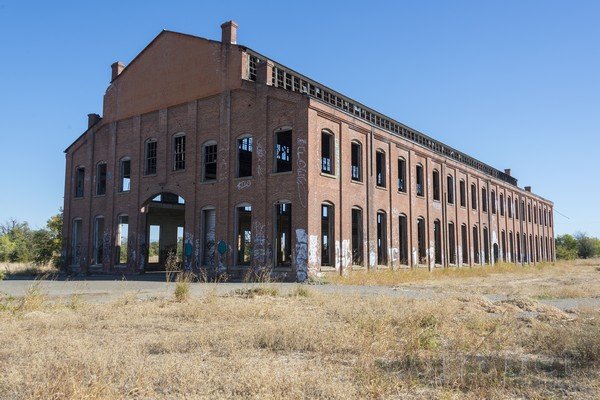What We Protect!
Butte Environmental Council aims to keep Butte County residents aware of current environmental issues and provide opportunities for involvement. BEC monitors policies and plans within Butte County to ensure that environmental concerns are brought to life and addressed!
Current Issues in Butte County
Vina GSA Board – Non-Agricultural Domestic Well User Stakeholder Director | SEAT IS OPEN
Fact Sheet for the Domestic Well User Community
Domestic well users are the first to be impacted by drought and over-pumping of groundwater.
Domestic well users are the most vulnerable, least informed, and least organized of the stakeholder groups who rely on the Vina Subbasin groundwater.
We are the first to face the consequences of sinking groundwater levels, increased pumping costs, encroaching contaminant plumes, and dry wells.
We need direct representation on the Vina GSA Board and that is the role of the Non-Agricultural Domestic Well User Stakeholder Director.
Domestic Well Users have direct representation on the Vina Board of Directors.
California Water Code Section 10723.2 and the Vina GSA Joint Exercise of Powers Agreement (JPA) Article 7.1.2(b) spell out the requirement that the domestic well user representative on the GSA Board shall extract groundwater from the Agency Jurisdiction for domestic water use only. The Vina JPA can be found here: https://www.vinagsa.org/jpa-bylaws-mous
The intent of the law and the letter of the JPA are crystal clear: Separate seats were established for "Agricultural User" and "Non-Agricultural Domestic Well User" specifically because these are two distinct constituencies with different, and often competing, sets of interests.
A person who is an agricultural groundwater extractor in the Subbasin, even if they own a domestic well, is an agricultural user because the vast majority of their water use and economic interest is tied to farming. If seated as the Non-Agricultural Domestic Well User Director, they would have a clear conflict of interest.
Agricultural interests are already well represented on the Vina GSA Board.
In accordance with the JPA, the Agricultural Groundwater Users of Butte County (AGUBC) nominate candidates for the for the Agricultural Stakeholder Director seat.
Agricultural interests are also represented with four seats on the 10-memberStakeholder Advisory Committee (SHAC).
There is an established process for nominating and selecting the Non-Agricultural Domestic Well User representative.
In accordance with Article 7.3.2 of the JPA, applications for the open Non-Agricultural Domestic Well User Director seat are reviewed by a Nominating Committee selected by the Vina GSA Board. The most qualified candidate is recommended to the Butte County Board of Supervisors for appointment to the Vina GSA Board.
At their Sept 9, 2025 meeting, the most qualified candidate was presented to the Board of Supervisors but members of the AGUBC complained that the six-week application period “had been insufficient time to recruit candidates” and that the eligibility criteria do not prohibit candidates with connections to agriculture. On that basis, the Board of Supervisors deferred the appointment and re-opened the application period.
Based on statements made at the Sept 9 th Board of Supervisors meeting and a letter submitted to the Board on Sept 4, 2025, the AGUBC intended to go around the legal process set forth in the Vina JPA agreement to seek appointment of a candidate that would be more inclined to protect agricultural economic interests.
The Domestic Well Users are already paying more than their fair share of the GSA Annual Fees and demand direct representation on the Board.
The adopted Vina GSA fee structure splits the $778,605 operating budget for FY 2025-2026 such that domestic groundwater users pay $441,894 (57%) and agricultural groundwater users pay $336,711 (43%).
When you take into account that agriculture consumes 90% of the groundwater pumped in the Vina Subbasin and domestic users consume 10%, then the comparison is more accurately presented as:
o Agricultural users pay $1.45 per acre-foot per year.
o Domestic users pay $17.89 per acre-foot per year.
Domestic groundwater users are paying much more than their fair share to operate the GSA, and they demand a seat representing them on the GSA Board.
2. Our Broader Issues With Groundwater Management
When the Sustainable Groundwater Management Act (SGMA) was passed in 2014, groundwater sustainability agencies (GSAs) were charged with creating Groundwater Sustainability Plans (GSPs) that serve as a roadmap for achieving groundwater sustainability in 20 years. In the context of SGMA, GSAs have been tasked with identifying Groundwater Dependent Ecosystems (GDEs) and establishing minimum thresholds and measurable objectives to assess impacts to GDEs. In Butte County, we have multiple GSAs relating to different subbasins and other areas. Chico is located in the Vina subbasin, and groundwater under Chico is therefore managed by the Vina GSA. The Butte County Department of Water and Resource Conservation is another organization that plays an important role in managing our groundwater resources.
Map showing the surface and subsurface extent of Tuscan and Tehama aquifers. (Map courtesy of California Dept. of Conservation)
Although groundwater is regulated by the Vina GSA, there was only one board seat representing agricultural interests on the Vina GSA Board. Therefore, farmers felt they had to organize and protect their interest in local groundwater. After years of planning behind closed doors, the Tuscan Water District was formed. Unfortunately, in TWD elections, votes are based on acreage, so the largest farms get the most say.
This places control of our groundwater with wealthy out-of-state corporations instead of valuing the input of Butte County citizens and small farmers. Even worse, the district is gerrymandered - its borders deliberately exclude the city of Chico, who would have something to say about how their groundwater is managed. These voices are being left out of the conversation, even though we’re all pulling groundwater from the same aquifer. If agriculture, which is responsible for 90% of groundwater use in Butte County, doesn’t figure out a way to stop depleting the aquifer, our groundwater dependent ecosystems like Bidwell Park and its Valley Oaks will be at risk of collapse. Currently, our aquifer is overdrafted by approximately 10,000 acre-feet.
There are a ton of public meetings relating to the management of our local groundwater. If you are interested in getting involved in this critical issue, there is often a chance to leave a public comment on the decisions being made in our county.
Check out the BEC community calendar to stay on top of all things groundwater in Butte County! We also offer an open-source library of water resources, called Public Water Resources. This is an ongoing issue so BEC will be continuing to monitor and report our findings.
2. Chico Barber District Development Environmental Impact Report
Are you up to date on the latest development plans in the City of Chico?
The Barber Yard Specific Plan Description:
“The proposed project consists of the full buildout of the 133 acre Barber Yard Specific Plan Area resulting in a mixed-use community accommodating a diverse range of up to 1,250 housing units with a mix of commercial, recreational and office uses located throughout. The proposed project would include adaptive reuse of the three existing on-site buildings (Warehouse, Engineering Building, and Shop). Within the approximately 16-acre off-site improvement area, an approximately 3-5 acre combination water quality retention/detention basin (stormwater basin), access drive from Estes Road, and an associated storm drain alignment would be constructed to connect the BYSP Area and stormwater basin to a new outfall to Comanche Creek.”
Concerns were voiced by the community at the Environmental Impact Review Workshop on January 29th held by Green City Chico and at the Environmental Impact Report Public Hearing on January 30th.
Pictured is the old Diamond Match Factory building.
Diamond Match, Chico California / Copyright Mark Hedlund 2012-2019. All rights reserved. Use in school projects and with links on social media is always okay. Please send me an email to request permission for any other use: hedlunch@yahoo.com
The Diamond Match Factory was an operational Mill and Factory owned by the Louisiana-Pacific Corporation functioning through the 20th Century on the 292 acres adjacent to the railroad in what is now considered South Chico. During the construction and operations of the facilities, many substances were used that would come out later as being toxic, hazardous, carcinogenic and detrimental to both people and the environment.
BEC’s Current Advocacy Issues (listed above) are led by the Advocacy Committee. If you are a community member and have questions or concerns to bring to the Advocacy Committee, please submit the form below.
Advocacy Committee Meetings may be attended by current BEC Members, Board Members and Staff. If you would like to participate, please email staff@becnet.org.






